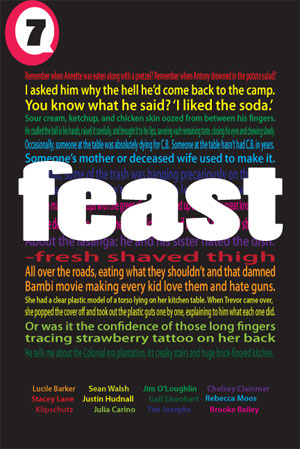Emily always liked to be the first one to crack the crust on the crème brûlée. Manners were the issue here. Emily had such good manners, and if it weren’t for this one area, she would exemplify charm and good breeding. The dilemma presented itself at least twice a year–sometimes more. She dined out frequently with groups, or the occasional single date. She was very popular. People always invited her, for which she was generally grateful, but it upped the risk factor considerably.
In order to manage this risk in an organized way, she created a mental flow chart of Creme Brûlée, or C.B., avoidance. The first, most obvious step was to suggest Mexican food. Or sushi. Rarely did it even come down to a French or International menu to contend with. But it did happened, which is why step two was developed, should there be cause to deploy it.
If she found herself at a restaurant, French or otherwise, where the prospect of C.B. was a real and present danger, she would intentionally order a very heavy meal and encourage her date or party to do the same. Steak. Pasta. Something that came with a lot of bread, which could be dipped into rich sauces. Mussels. Even if the others tried to order salad or only appetizers (“I’m watching my weight”, “I have a gluten-intolerance”), she would try to remedy this obstacle by frequently offering her own food to the others. “Try this lobster tail, it’s so much better dipped in the sauce. Waiter, can we please have more bread?”
Still. The inevitable predicament came periodically, over the course of her dining career, when she would find herself at a C.B.-serving restaurant, among friends who still had room for dessert. Usually – hopefully – it never came to this point, but when it did, she took on the task of vigorously lobbying for another particular dessert. This usually worked, as most people are highly suggestible to the prospect of chocolate. Chocolate cake, pot de crème – any of these could be a lifesaver. Ice cream was also a good bet, especially if it was served in a unique way. “Affegato, now that sounds tasty!” she would say enthusiastically.
Still, it couldn’t be avoided. Occasionally, someone at the table was absolutely dying for C.B. Someone at the table hasn’t had C.B. in years. Someone’s mother or deceased wife used to make it. Someone has “Yelped” the restaurant, only to discover that other Yelpers have raved over the C.B. Some had even said, “This is the best C.B. I’ve ever had! You must try it! Five stars!” Or, and this happens at least often enough for Emily to have made a point of factoring it in as a risk, the chef or owner or manager of the restaurant will bring out a free dessert because “you waited so long for your entrees” or “you’re such a lovely group.” C.B. was the most likely to be brought out under these circumstances.
As many as two times a year Emily was likely to be confronted with C.B. She always considered getting up to use the restroom, but this plan never worked, A) because it was hard to plan the timing perfectly, and B) people were usually mannerly enough to wait for her to return. And so there she would find herself at a table with the C.B. and a spoon before her. This is how the dish is served: it is put in the middle, and everyone gets a spoon. Usually they are arranged aerially with the handle pointing at the diner, and the spoon part pointing towards the C.B. If it came to this point, there was no way to prevent the following chain of events; everyone would gaze sheepishly at the little white, oval ramekin, though no one would make the first move. But it had to be done, the custard was protected by a thin shell of burnt, glossy, caramel-colored sugar, and until this shell was tapped lightly with a spoon, making the tiniest crackling sound, they would not be able to continue their dining – nor the movie, the wine bar, or whatever else was on the agenda for the rest of the evening. This was an absolute stopping point that had to be overcome in order for the evening to progress. She always tried to wait. She hoped beyond hope that someone else would do it – just really fast, before any time could elapse. But this never happened. Everyone always became suddenly coy and unwilling to make the first move. Emily hated that she couldn’t stay coy, that she couldn’t not make the first move. It felt crude and uncouth to be so bold, but she knew that once it had reached this point, there was no going back. After a few moments elapsed, she could feel her arm rising and her hand grasping for the spoon. As the spoon neared the dish she felt outside of her body – almost as if she were channeling a spirit. Then, with a quick flick of her wrist, the spoon came down fast and gently. Often, the sound couldn’t even be heard over the din of the other diners and the music. It was such a soft and elegant sound, and even if she couldn’t hear it, she could feel it at the precise moment of impact. Upon impact, all anxiety melted away in an orgasmic moment of utter release. Everyone was eating the C.B. Everyone except Emily, who never particularly cared for custard; but as they ate, she wondered if anyone else at the table had any idea of the climax that just occurred. They carried on, eating, drinking, laughing, and talking. Emily sank back into her chair, exhilarated, but calm.
This happened at least twice a year.
Rebecca Moos lives in San Diego with her dog Fern. She studied Literature/Writing at the University of California in San Diego. She writes fiction, satire and personal narrative stories that hopefully draw people closer to each other and make them happy.










